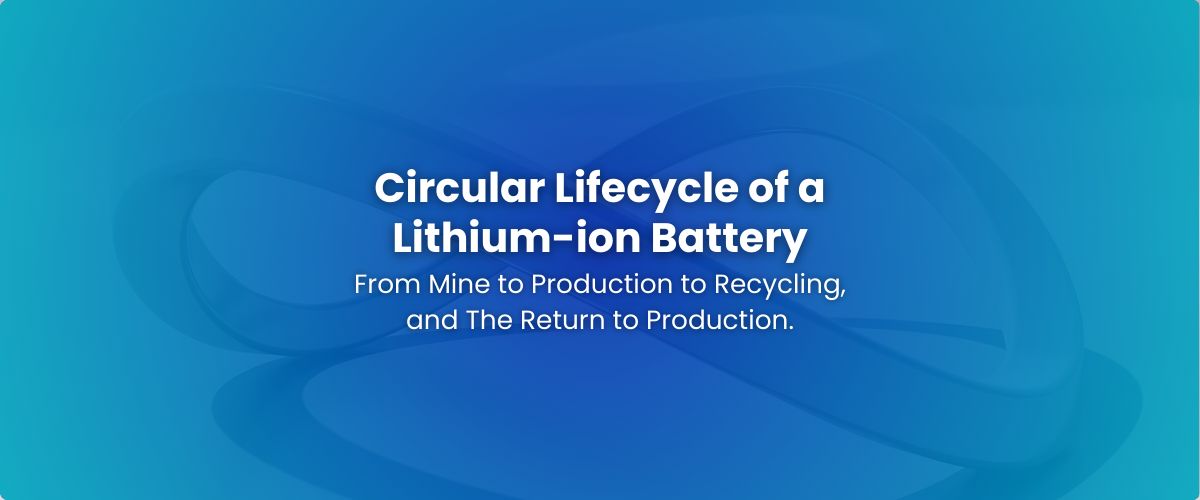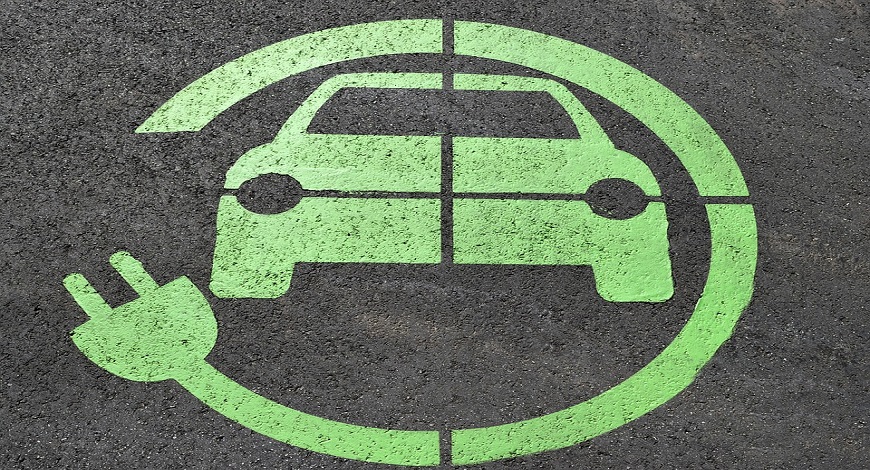
Lithium-ion batteries seem fated to be ubiquitous for at least the first half of the 21st century, powering everything from smartphones to electric vehicles. However, these batteries also face the challenges of battery waste management, volatility of the materials and the materials’ supply, and their general scarcity.
This edition of Battery Decoded explores the life cycle of a lithium-ion battery, from its creation to its recycling. By walking through the journey of a recycled lithium-ion battery, we can appreciate the importance of this necessary industry for sustainability, and the innovations that brought it to life.
Lithium-ion batteries (LIBs) begin their journey with the extraction of raw materials such as lithium, nickel, cobalt, and graphite. The mining process, while essential, presents challenges like environmental degradation, water pollution, and ethical concerns. Striking a balance between resource extraction and environmental preservation is crucial for sustainable practices.
Lithium mining and processing are water-intensive and polluting, affecting local communities and ecosystems. Recycling lithium-ion batteries is challenging and hazardous, while cobalt extraction poses ethical and environmental issues.
The global lithium reserves are estimated at 17 million tonnes, with more than half of them located in the Lithium Triangle of South America, covering parts of Argentina, Bolivia, and Chile. The global lithium production reached 82,000 tonnes in 2020, with Australia being the largest producer, followed by Chile and China.
The intricate process of battery production involves several stages, starting with the manufacturing of electrodes. These electrodes, composed of anode and cathode materials, undergo a meticulous coating and drying process. The assembly of cells follows, involving the charging, discharging, and aging of the battery before it undergoes a pre-shipment inspection. Understanding the nuances of battery production is pivotal for improving efficiency and reducing environmental impact.
The global lithium-ion battery manufacturing capacity was 320 GWh in 2019, and is projected to increase to 1.3 TWh by 2030, with China, Europe, and the US being the major markets. According to various reports, the size of the global lithium battery market was $40.6 billion in 2019, expected to increase at a CAGR of 13.0% from 2020 to 2027. This burgeoning size is indicative of a future battery waste management challenge, when the batteries reach the end-of-life in their original application.
Once assembled, the lithium-ion battery begins its journey of charging and discharging, with each cycle incrementally affecting its lifespan. On average, a standard lithium-ion battery lasts 2-3 years, depending on usage. Following its initial use, the battery may find a second life in stationary energy storage, contributing to sustainability and reducing environmental impact.
The lifespan of a lithium-ion battery can be calculated using the formula: Life (in cycles) = (Capacity x 100) / (Discharge rate x Depth of discharge). Factors like charge and discharge rates or C-rate, temperature, and more can affect the active lifespan of a lithium-ion battery-powered application. The global electric vehicle market size in 2019 was valued at $162.34 billion and will reportedly reach $802.81 billion around 2027, registering a CAGR of 22.6%.
The end-of-life stage for both e-Waste and Battery Waste presents two main options: recycling or reuse. Recycling involves shredding the battery cells into small pieces, creating a granular material known as “black mass.” This black mass undergoes processes like heat-based smelting or liquid-based leaching to extract various energy transition materials including lithium, cobalt, and nickel. Recycling not only reduces waste but also provides a source for repurposing materials. The global lithium battery recycling market was reportedly valued at $165.3 million in 2019, estimated to reach $18,095.7 million by 2030 at a CAGR of 31.5% between 2020 to 2030.
Recycling and second-life use of lithium-ion batteries will help address emerging issues associated with the clean energy transition and prevent problems caused by inappropriate battery disposal. Recycling used lithium-ion batteries (and the devices that contain them) will help reduce dependence on scarce raw materials, lower environmental impacts, and create new revenue streams.
Battery recycling involves steps like collection, diagnosis, sorting, discharge, dismantling, and separation. Current-gen battery recycling technologies can recover most of the energy transition materials, reduce greenhouse gas emissions, and create new revenue and jobs while offsetting the demand for virgin mining.
To recycle lithium battery metals is especially beneficial and profitable with the right technologies, as they can be recovered and reused with high efficiencies to make new batteries as well as products in other industries, often with better quality and performance.
Energy transition materials are metals and minerals for renewable energy technologies, such as lithium, cobalt, nickel, etc. Recycling them from used batteries and other sources is important for their supply, cost, and sustainability, as much as it is important for battery waste management.
The circular economy of lithium-ion batteries forms a closed loop, reminiscent of the number 6, symbolizing a continuous flow from mining to production to use and back to production through recycling or reuse. Recovered materials from recycled batteries find new life in various applications.
For instance, recovered high-purity lithium can be readily utilized in the production of new lithium-ion batteries, and materials like cobalt and nickel also find applications in industries such as electronics and aerospace thanks to high-purity battery recycling. In parallel, battery repurposing of healthy cell modules ensures that the journey of a lithium-ion battery continues beyond its initial use.
While not a perfect loop due to the reliance on primary ecosystem mining as the initial source of material, a circular economy of Lithium ion batteries offers significant benefits, including reduced dependence on scarce raw materials, battery waste management, lower environmental impacts, and the creation of new revenue streams.
To conclude, the lifecycle of a lithium-ion battery reflects an equilibrium between technological innovation, environmental responsibility, and economic viability. By understanding and optimizing each stage of the battery’s life, we contribute to a more sustainable future, symbolized by the circular economy’s ethos of reducing, reusing, and recycling.
Related blogs
This entrepreneur wants India to make its own lithium-ion cells for electric vehicle batteries

Forbes India
Rajat Verma already recovers raw materials from used cells at his venture, LOHUM Cleantech. He wants to close the loop by making cells in India as well.
India needs integrated recycling and repurposing battery business model: Rajat Verma of LOHUM Cleantech

YOURSTORY
In an interaction with AutoStory, Rajat Verma, Founder and CEO of LOHUM Cleantech, speaks about building his company, and about battery manufacturing and repurposing as an industry.
Sourcing Raw Materials Is A Big Challenge In Li-ion Battery Space: Founder Lohum

Business World Disrupt
Recognized as ‘The Most Innovative Company of the year 2022’ by The Confederation of Indian Industry (CII), LOHUM is a producer of sustainable Li-ion battery raw materials
1800 572 8822
Email : enquiry@lohum.com
G98, Site, 5, Kasna, Block A, Surajpur Site V, Greater Noida, Uttar Pradesh 201306
LOHUM Cleantech Private Limited, Plot No. D-7 & 8, Site 5th, Kasna Industrial Area, Greater Noida, Gautam Budh Nagar, Uttar Pradesh – 201308
LOHUM Cleantech Private Limited, Plot No. O-17, Site 5th, Kasna Industrial Area, Greater Noida, Gautam Budh Nagar, Uttar Pradesh – 201308